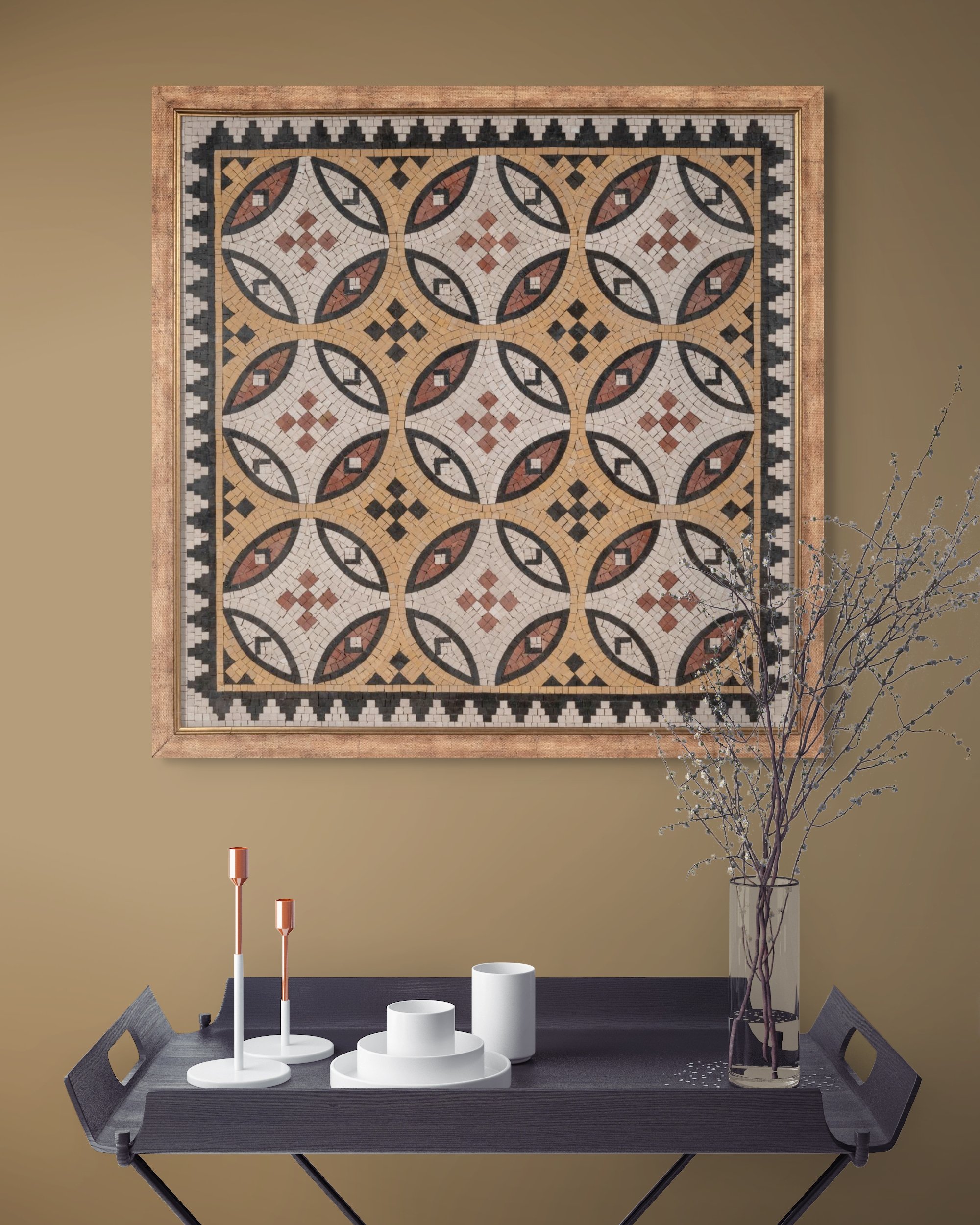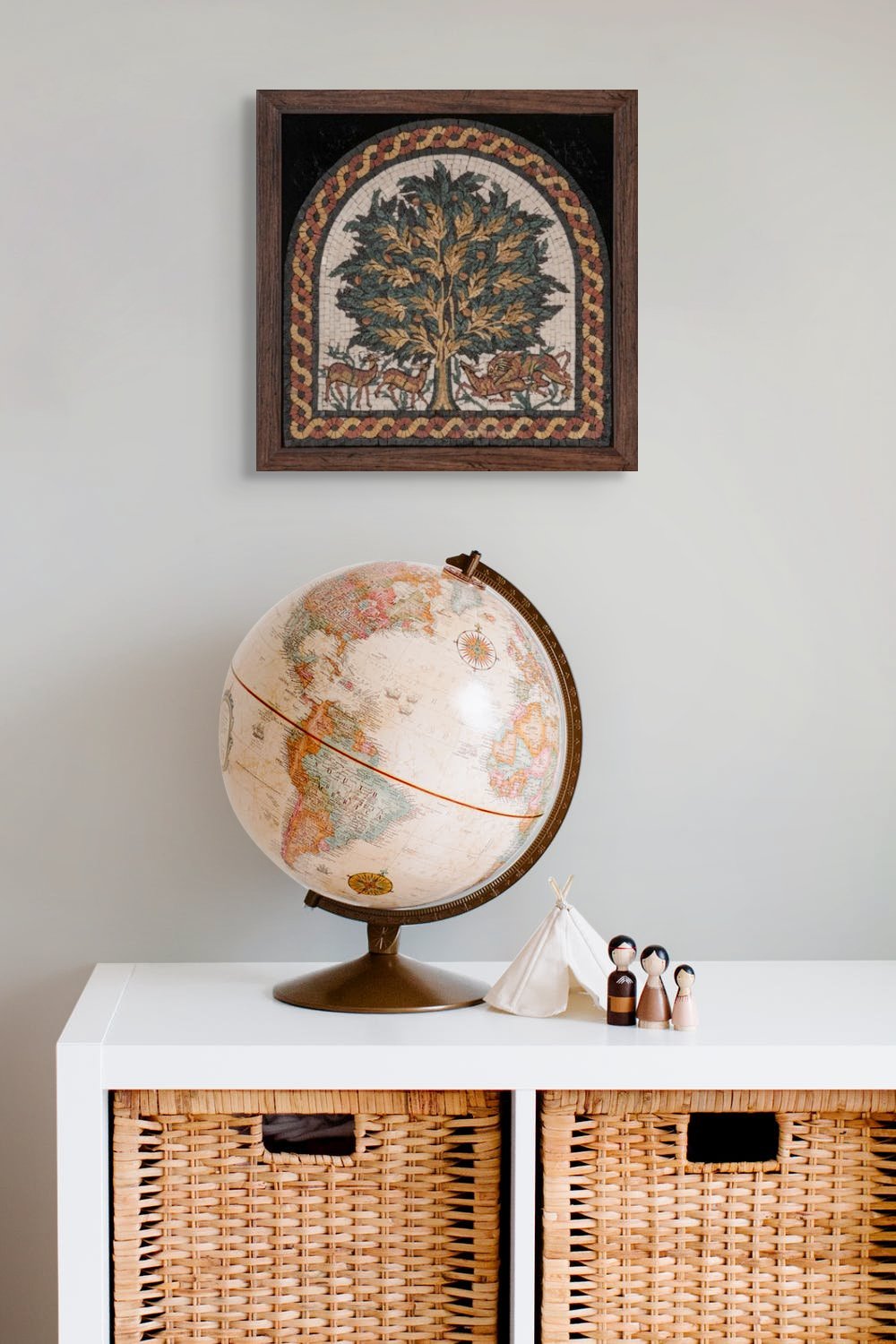 Image 1 of 2
Image 1 of 2

 Image 2 of 2
Image 2 of 2



Evil Eyes
Multi-colored and symmetrical, this geometric pattern is directly inspired by mosaics from ancient Antioch, dating to 2nd Century A.D.
Ranked alongside the likes of Rome, Alexandria, and Constantinople, the ancient city of Antioch was one of the four great cities of the Roman and Early Christian world—though by far the least known. Located in what is now southeastern Turkey as the city of Antakya, Antioch was rich with art and architecture, particularly renowned for its intricate, finely cut geometric mosaics.
Known as the “house of the evil eye,” the source of this mosaic design was filled with mosaics from floor to ceiling. High-class homes throughout the city similarly featured impressive spreads of mosaics woven into their architecture. The house earned its moniker from the frequent designs bearing distinct eye motifs.
The mosaic is composed of a uniform arrangement of intersecting circles that create four-pointed stars enclosed within larger circles, the mosaic creates four-pointed stars enclosed within larger circles. One row displays white stars with red centers, surrounded by alternating red and gray spandrels, each containing a white square shaded in black. Alternating rows showcase yellow stars with black centers.
Multi-colored and symmetrical, this geometric pattern is directly inspired by mosaics from ancient Antioch, dating to 2nd Century A.D.
Ranked alongside the likes of Rome, Alexandria, and Constantinople, the ancient city of Antioch was one of the four great cities of the Roman and Early Christian world—though by far the least known. Located in what is now southeastern Turkey as the city of Antakya, Antioch was rich with art and architecture, particularly renowned for its intricate, finely cut geometric mosaics.
Known as the “house of the evil eye,” the source of this mosaic design was filled with mosaics from floor to ceiling. High-class homes throughout the city similarly featured impressive spreads of mosaics woven into their architecture. The house earned its moniker from the frequent designs bearing distinct eye motifs.
The mosaic is composed of a uniform arrangement of intersecting circles that create four-pointed stars enclosed within larger circles, the mosaic creates four-pointed stars enclosed within larger circles. One row displays white stars with red centers, surrounded by alternating red and gray spandrels, each containing a white square shaded in black. Alternating rows showcase yellow stars with black centers.
Multi-colored and symmetrical, this geometric pattern is directly inspired by mosaics from ancient Antioch, dating to 2nd Century A.D.
Ranked alongside the likes of Rome, Alexandria, and Constantinople, the ancient city of Antioch was one of the four great cities of the Roman and Early Christian world—though by far the least known. Located in what is now southeastern Turkey as the city of Antakya, Antioch was rich with art and architecture, particularly renowned for its intricate, finely cut geometric mosaics.
Known as the “house of the evil eye,” the source of this mosaic design was filled with mosaics from floor to ceiling. High-class homes throughout the city similarly featured impressive spreads of mosaics woven into their architecture. The house earned its moniker from the frequent designs bearing distinct eye motifs.
The mosaic is composed of a uniform arrangement of intersecting circles that create four-pointed stars enclosed within larger circles, the mosaic creates four-pointed stars enclosed within larger circles. One row displays white stars with red centers, surrounded by alternating red and gray spandrels, each containing a white square shaded in black. Alternating rows showcase yellow stars with black centers.
Information
Polychrome Stone Tesserae
2025
Handcrafted by Farez Jawad
Classic: 27 x 27 in (69 x 69 cm)
Grand: 40 x 40 in (102 x 102 cm)









